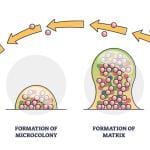The human mouth is a marvel of biological engineering, housing a complex array of muscles that facilitate essential functions like speaking, eating, and expressing emotions. While often overlooked, the oral muscles play a crucial role in our daily lives, influencing not only our ability to communicate but also impacting our overall health and well-being. In this article, we delve deep into the intricate world of oral muscles, exploring their anatomy, function, and significance in various aspects of human life.
Anatomy of Oral Muscles
The oral cavity is home to a diverse set of muscles, each with its own unique structure and function. These muscles are primarily responsible for controlling the movements of the lips, tongue, cheeks, and jaw. Let’s take a closer look at some of the key oral muscles:
- Orbicularis Oris
- Buccinator
- Masseter Muscle
- Temporalis Muscle
- Medial Pterygoid
- Lateral Pterygoid
- Levator Labii Superioris
- Genioglossus
- Hyoglossus
- Styloglossus
- Palatoglossus
- Superior and Inferior Longitudinal Muscles
- Transverse and Vertical Muscles
- Digastric
- Mylohyoid
Orbicularis Oris
The orbicularis oris is a circular muscle that surrounds the mouth and is primarily responsible for puckering the lips, closing the mouth, and controlling facial expressions. This muscle is crucial for activities like speaking, eating, and kissing.
Buccinator
The buccinator muscle is located in the cheeks and plays a vital role in controlling the movement of food during chewing and swallowing. It also helps in blowing air out of the mouth and assists in producing certain sounds during speech.
Masseter Muscle
The masseter muscle is one of the primary muscles of mastication, responsible for closing the jaw during chewing and biting. It is located at the side of the face and is easily palpable when clenching the teeth. The masseter muscle is considered one of the strongest muscles in the human body due to its role in generating the force required for chewing.
The masseter muscle originates from the zygomatic arch (cheekbone) and the lower border of the zygomatic arch. It inserts into the angle and ramus of the mandible (lower jawbone).
Temporalis Muscle
The temporalis muscle is another key muscle involved in mastication, situated on the side of the head above the zygomatic arch. It plays a crucial role in elevating and retracting the mandible during chewing and biting, working in conjunction with the masseter muscle and other muscles of mastication.
The temporalis muscle originates from the temporal fossa of the skull, specifically from the temporal lines and fascia. It inserts into the coronoid process of the mandible (near the jaw joint).
Medial Pterygoid
The medial pterygoid muscle is another important muscle involved in mastication (chewing) and jaw movement. It is situated deep within the mandibular ramus, adjacent to the lateral pterygoid muscle. The medial pterygoid muscle originates from the medial surface of the lateral pterygoid plate of the sphenoid bone and inserts into the medial surface of the angle of the mandible.
Functionally, the medial pterygoid muscle works in coordination with the lateral pterygoid muscle and other muscles of mastication to elevate the mandible and close the jaw during chewing. It also aids in moving the jaw from side to side, contributing to the grinding and crushing motions required for efficient food processing.
Lateral Pterygoid
The lateral pterygoid muscle is one of the muscles of mastication, located deep within the jaw joint (temporomandibular joint or TMJ). It consists of two heads, superior and inferior, which work together to coordinate the movement of the lower jaw (mandible) during chewing and speaking.
The superior head of the lateral pterygoid originates from the infratemporal surface of the greater wing of the sphenoid bone, while the inferior head originates from the lateral surface of the lateral pterygoid plate of the sphenoid bone. Both heads insert into the neck of the mandible.
The lateral pterygoid muscle plays a crucial role in the opening and lateral movement of the jaw. During jaw opening, the contraction of the lateral pterygoid muscle pulls the mandible forward and downward, initiating the movement. Additionally, it aids in side-to-side movements of the jaw, allowing for efficient chewing and grinding of food.
Levator Labii Superioris
The levator labii superioris is a facial muscle located in the upper lip region. It originates from the infraorbital margin of the maxilla (the upper jawbone) and inserts into the upper lip.
Functionally, the levator labii superioris muscle is responsible for elevating the upper lip, contributing to facial expressions such as smiling, sneering, and snarling. It works in conjunction with other facial muscles to produce a wide range of emotional and expressive gestures.
Genioglossus
The genioglossus muscle is one of the extrinsic muscles of the tongue, originating from the chin area (genial tubercle) and extending to the base and sides of the tongue. It plays a crucial role in tongue protrusion and retraction, as well as in shaping the tongue during speech and swallowing.
Hyoglossus
Another extrinsic muscle of the tongue, the hyoglossus, originates from the hyoid bone and extends to the sides of the tongue. It assists in depressing and retracting the tongue during swallowing and speaking.
Styloglossus
The styloglossus muscle originates from the styloid process of the temporal bone and extends to the sides of the tongue. It aids in retracting and elevating the tongue, particularly during the swallowing process.
Palatoglossus
This muscle forms part of the soft palate and extends to the sides of the tongue. It assists in elevating the back of the tongue and closing the oropharyngeal isthmus during swallowing, helping to prevent food from entering the nasal cavity.
Superior and Inferior Longitudinal Muscles
These intrinsic muscles of the tongue run along the length of the tongue and play a role in shaping and changing the tongue’s contour during speech and swallowing.
Transverse and Vertical Muscles
Also intrinsic muscles of the tongue, the transverse and vertical muscles contribute to the tongue’s ability to change shape and position, facilitating various oral functions such as speech articulation and manipulation of food during chewing and swallowing.
Digastric
The digastric muscle consists of two bellies connected by an intermediate tendon. The anterior belly originates from the digastric fossa of the mandible, while the posterior belly originates from the mastoid notch of the temporal bone. It assists in opening the mouth by depressing the mandible and also helps in swallowing by stabilizing the hyoid bone.
Mylohyoid
The mylohyoid muscle forms the floor of the mouth and originates from the mylohyoid line of the mandible. It plays a crucial role in swallowing by elevating the hyoid bone and floor of the mouth, helping to push food towards the back of the throat.
Function of Oral Muscles
The oral muscles work in coordination with each other to perform a wide range of functions essential for daily life. These functions include:
- Speech Production
- Eating and Swallowing
- Facial Expressions
- Oral Health
Speech Production
The precise coordination of oral muscles is crucial for the production of speech sounds. Movements of the lips, tongue, and palate shape the airflow from the lungs into specific sounds, allowing us to communicate effectively with others.
Eating and Swallowing
Chewing and swallowing are complex processes that require the coordinated action of multiple oral muscles. Muscles of the jaw, tongue, and cheeks work together to break down food into smaller pieces and propel it towards the throat for swallowing.
Facial Expressions
The orbicularis oris and other facial muscles play a key role in conveying emotions through facial expressions. Smiling, frowning, and other facial gestures involve the contraction and relaxation of these muscles, allowing us to express our feelings non-verbally.
Oral Health
Maintaining the strength and function of oral muscles is essential for overall oral health. Weak or dysfunctional oral muscles can contribute to problems such as difficulty chewing and swallowing, speech disorders, and temporomandibular joint (TMJ) dysfunction.
Significance of Oral Muscles
The importance of oral muscles extends beyond their immediate functions to impact various aspects of human life, including:
- Communication
- Nutritional Health
- Facial Aesthetics
- Psychological Well-being
Communication
Clear and effective communication relies heavily on the proper function of oral muscles. Speech disorders resulting from oral muscle dysfunction can significantly impair an individual’s ability to express themselves and interact with others.
Nutritional Health
The ability to chew and swallow food properly is essential for maintaining adequate nutrition and overall health. Dysfunctional oral muscles can lead to difficulties in eating, resulting in malnutrition and other health complications.
Facial Aesthetics
The tone and strength of oral muscles contribute to facial aesthetics and overall attractiveness. Well-developed muscles around the mouth and jaw can give the face a more youthful appearance, while weak or underdeveloped muscles may lead to sagging or asymmetry.
Psychological Well-being
The ability to smile, laugh, and express emotions through facial expressions has a significant impact on psychological well-being. Dysfunction of oral muscles can affect an individual’s self-esteem and social interactions, leading to feelings of isolation and depression.
Conclusion
The oral muscles represent a remarkable feat of biological engineering, playing a crucial role in essential functions like speaking, eating, and expressing emotions. Understanding the anatomy, function, and significance of these muscles is essential for appreciating their importance in human life. By recognizing the vital role that oral muscles play, we can better appreciate the intricate complexities of the human body and strive to maintain optimal oral health and function.





